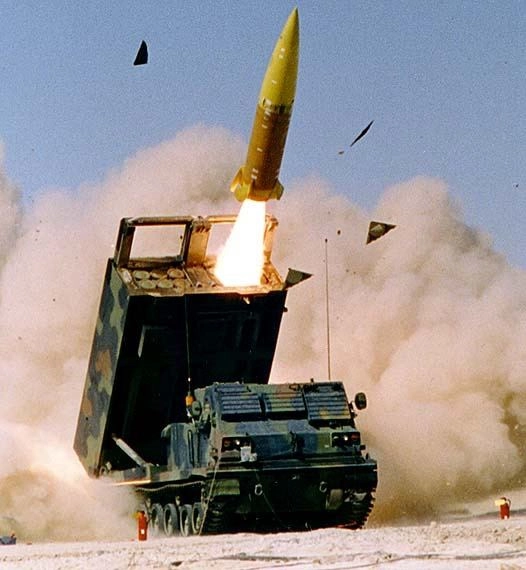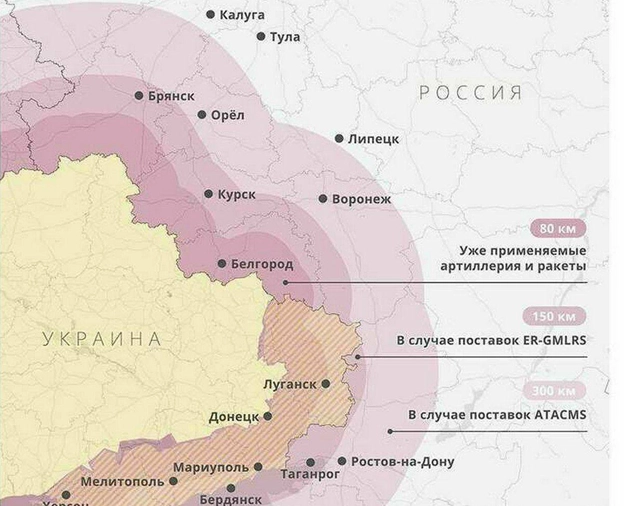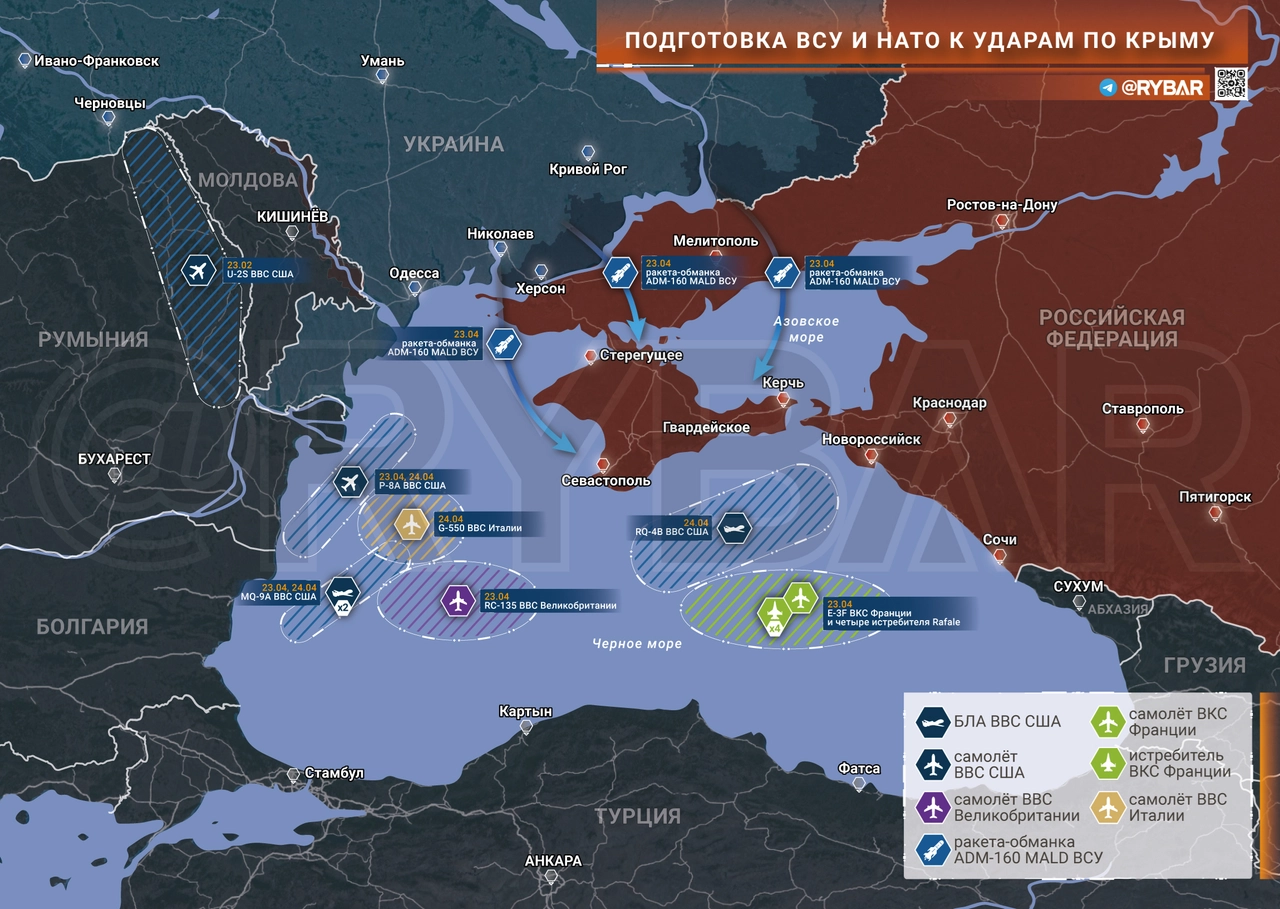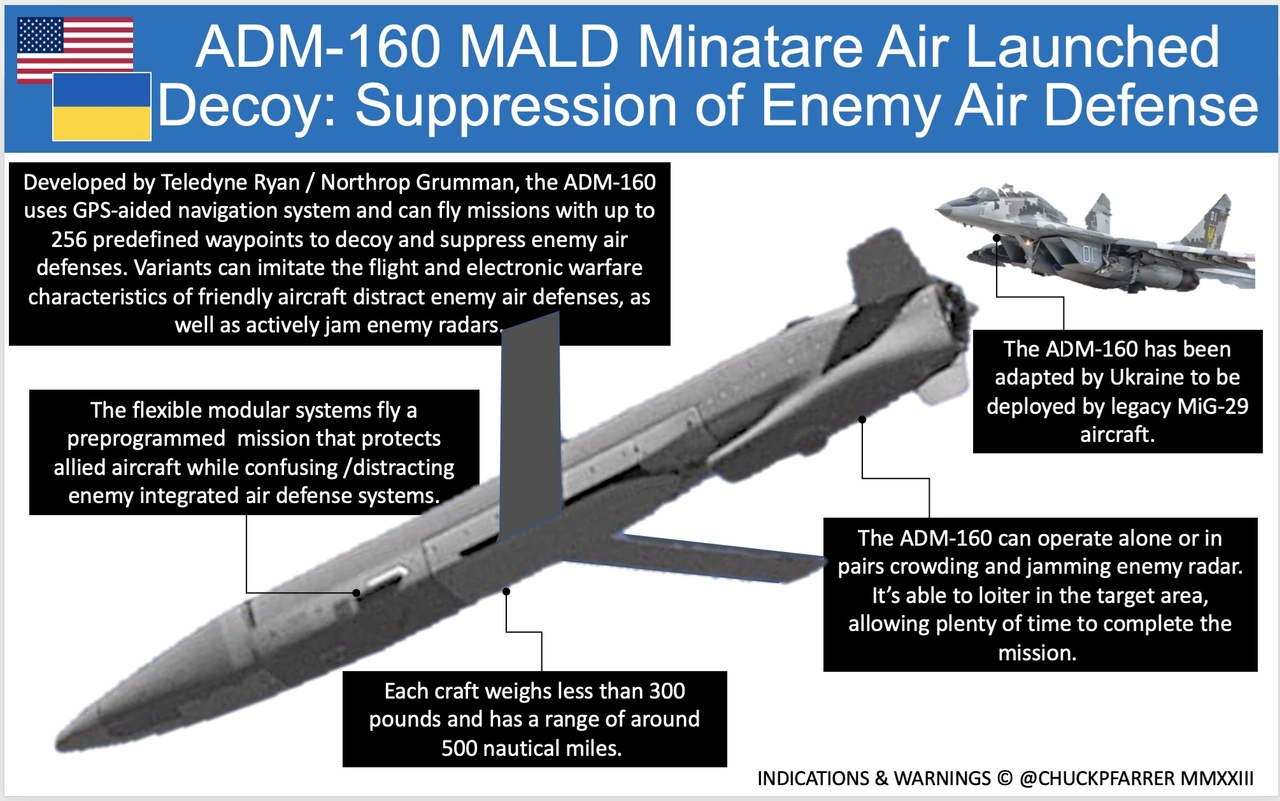Russian state-controlled media and Kremlin-loyal hybrid war information platforms reacted grimly to news the US had handed over more than one hundred precision-guided, long-range missiles to Ukraine, with more than a few mil-bloggers saying air defenses in the occupied Crimea peninsula will soon get hammered.
Major Russian news media told viewers the weapons would be used against targets inside Russia, flatly ignoring declarations by US officials that the high-tech American weapons were transferred to Ukraine on the specific condition they may only hit targets inside Ukraine’s borders. But according to those reports, the US was arming Ukraine with the objective of hitting Russian homes and businesses.
JOIN US ON TELEGRAM
Follow our coverage of the war on the @Kyivpost_official.
Russian propagandist Olga Skabeyeva during a Wednesday, April 24 evening broadcast of the nationally televised Kremlin flagship news program 60 Minut (60 minutes) reported the long range of the newly delivered American weapons covers “an enormous territory of our country, which the Ukrainians now can reach.”


German Patriot Units in Poland to Secure Ukraine Logistics Hub
Quantities of ATACMS missiles are already in the hands of the Ukrainian military and Washington claims arms deliveries only restarted to Kyiv on Wednesday are “misinformation,” Skabeyeva said.
In comments in Washington on Wednesday, only hours before Skabeyeva’s broadcast, US National Security Advisor Jake Sullivan said the missiles could be used “inside Ukraine’s sovereign territory…we now have a significant number of ATACMS coming off their production line and entering US stocks. And as a result, we can move forward with providing the ATACMS while also sustaining the readiness of the US armed forces.”
Local Russian news platforms repeated national media reports about potential Ukrainian ATACMS strikes inside Russian Federation territory. The Belgorod Oblast-based Posluchano Klintsy published a map showing a strike envelope stretching almost to the Russian heartland cities Kaluga and Tula – but reassured readers that Russian army S-300 systems could handle the threat.

Russian mil-bloggers – many reporting in step with the Kremlin line for years – widely predicted new waves of Ukrainian long-range strikes using ATACMS, but saw the Moscow-occupied Ukrainian territory Crimea as likely Kyiv’s first target for the missiles.
The banned-in-Ukraine platform Rybar Z, run by Kremlin information warfare specialist Mikhail Zvinchuk, only hours after White House confirmation of the ATACMS transfer, published a detailed report on joint NATO-Ukraine reconnaissance operations in air space above the Black Sea. The spy aircraft sorties along with satellite overflights and drones probing Russian air defenses, the report claimed, all were part of a systematic NATO campaign to fix the locations of Russian air defenses in the Crimea peninsula for targeting and destruction by Ukraine-fired ATACMS.
Key indicators of advanced Ukraine-NATO preparations for the attacks have included a doubling of NATO reconnaissance aircraft activity over the Black Sea over the past week, and the very likely launch by NATO aircraft of US-made ADM-160B decoy missiles into air space above the Black Sea to trigger Russian air defense radars in Crimea and identify their locations, a Rybar report published on Wednesday said.

The Raytheon-manufactured ADM-160B MALD (miniature air-launched decoy) is designed to appear on radars like a combat aircraft and powerful engines and on-board computers allow the drone to mimic flight paths of an attack or fighter jet closely.
“If we add official statements about additional deliveries of long-range missiles, including ATACMS…the picture is clear: new strike attempts (against Crimea) are just around the corner. And this may happen during the May holidays, and even more likely, before the presidential inauguration (of Vladimir Putin) on May 7…the target once again may be the Crimean Bridge, the attention to which is very high,” Zvinchuk’s platform predicted.
“The problem with ATAMCS missiles is that they really are effective. They were specifically designed to attack layered air defenses of the Soviet- and Russian-design,” the pro-Moscow mil-blogger Zhivov Z informed his 75,000+ readers in a glum Thursday morning post.
Kyiv Post was unable to confirm claims about ADM-160B use independently.

Kyiv Post checks of recent NATO air activity in the area reported in open-source air traffic data showed a discernable increase of NATO reconnaissance aircraft sorties to air space above the western and central Black Sea. Most notable was the Tuesday presence of two US Navy Poseidon maritime search aircraft orbiting over southeast Romania, and daily patrols by US Air Force Global Hawk drones to observation points less than 150 kilometers (93 miles) from Crimea or the Russian mainland.
In mid-April, the sortie pace per Kyiv Post research was a single Poseidon daily, and a single Global Hawk every second day.
The White House on Wednesday confirmed the US transferred “a significant number” of ATACMS missiles to Ukraine in March, weeks before the US Congress approved funding more arms handovers to Kyiv. According to US-based major media reports on Thursday, more than 100 ATACMS missiles, each costing $3 million, were sent. Most of the missiles are designed to hit a target 300 kilometers (106 miles) distant with a warhead loaded with cluster munitions, a Thursday New York Times article said.
The Washington-based Institute for the Study of War, in a Thursday situation estimate, said the most likely targets for the long-range ATACMS would be Russian helicopter bases and ammunition depots. “Cluster-munition-armed versions of the ATACMS missiles allow Ukrainian forces to conduct more efficient strikes against airfields that can more widely destroy Russian aircraft and other assets than individual missile strikes on individual aircraft…The arrival of ATACMS long-range missiles could also pose a significant threat to Russian ammunition depots in rear areas and may force the Russian command to choose between fortifying existing depots and further dispersing depots throughout occupied Ukraine,” the report said in part.
Kremlin spokesman Dmitry Peskov in Thursday comments in Moscow told reporters: “The United States is directly involved in this conflict. It is on the road to increasing the range of the weapons systems it already supplies. This will not fundamentally change the outcome of the special military operation [Russo-Ukrainian War]. We will prevail. But it [high-tech US weapons transfers to Kyiv] will cause more problems for Ukraine itself.”
On Wednesday the Russian mil-blogger Rybar Z claimed NATO aircraft reconnaissance air operations over the Black Sea had more than doubled since Monday and that those operations were clear evidence of impending Ukrainian ATACMS strikes against Crimea. The source claimed NATO aircraft had launched decoy drones into air space close to Crimea to trigger Russian air defense radars and identify their location. Kyiv Post checks of open-source air traffic logs showed NATO spy aircraft operational intensity had increased, but not doubled. Aside from the Rybar Z claim, Kyiv Post found no compelling evidence of NATO aircraft – decoy or otherwise – approaching close to Crimea in the past 96 hours.
You can also highlight the text and press Ctrl + Enter










